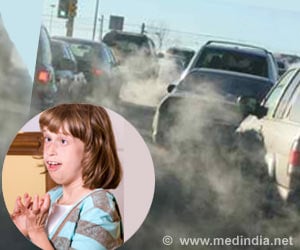Diesel emissions contain a range of toxic chemicals including charged particles, which stick to the lungs and are probably carcinogenic to humans.

"Although the effects of ions and charged particles generated by high-voltage power lines on human health is still open to conjecture, there has been a lot of attention on increased exposure due to expanding power networks in urban residential areas," said researcher Rohan Jayaratne.
"However, people do not realize that a large number of charged particles in urban environments come from motor vehicle emissions," he added. The researchers found that the concentration of charged particles was higher especially when the traffic included heavy-duty diesel trucks.
Jayaratne said while there was no evidence that breathing in-air ions was a health risk, approximately one-half of the fine particles that we inhale during normal breathing is deposited in our lungs.
"We do not believe that ions are dangerous - the danger comes from the pollutants. The ions merely assist the particles to stick to the lungs. If there are no dangerous particles in the air to attach to the ions, there is no risk of ill health."
Therefore, it is not surprising that several studies have demonstrated a link between particulate pollution from exhaust fumes and adverse health effects.
Advertisement
Advertisement









